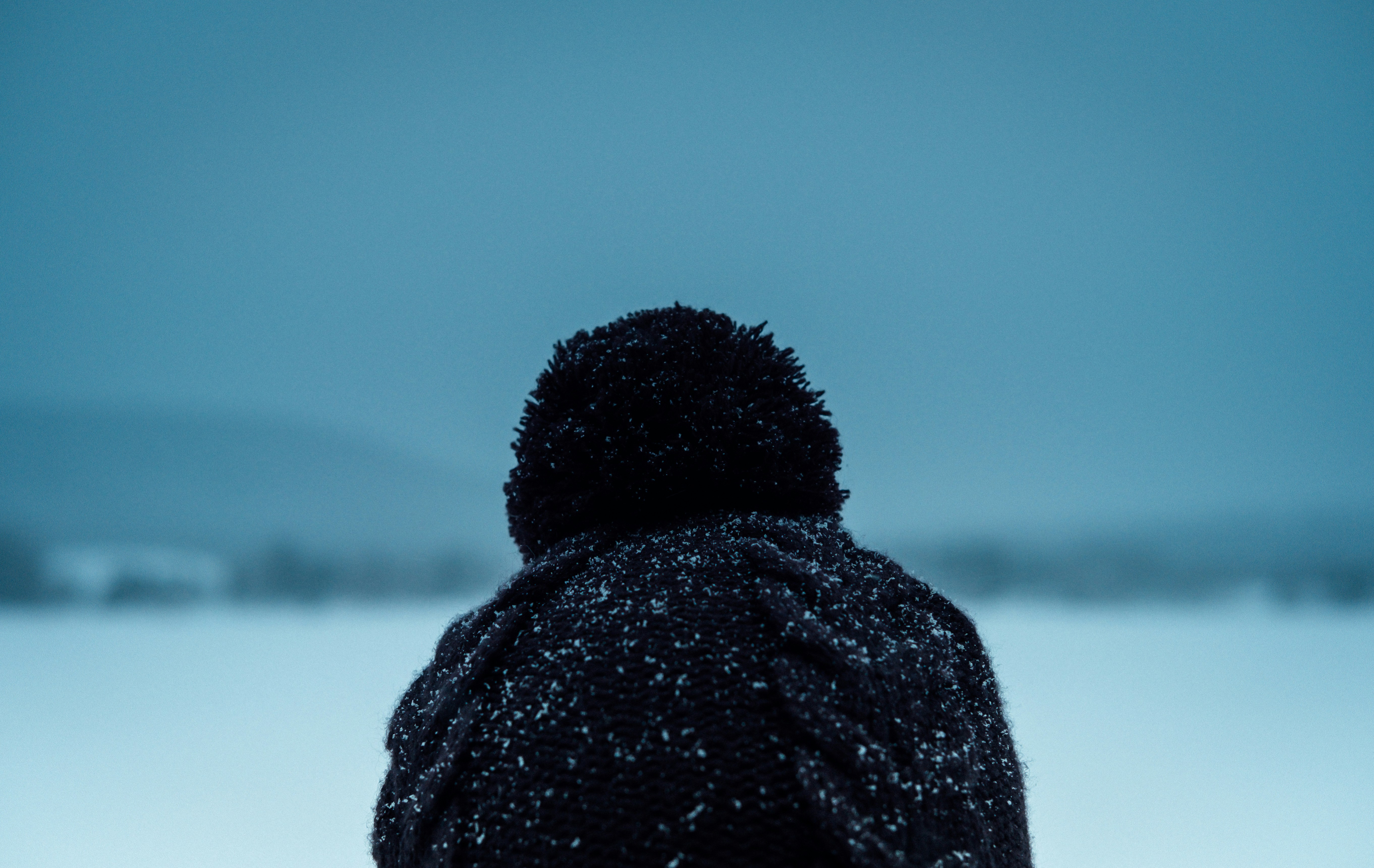Living in a cold environment can be challenging, especially when it comes to staying warm and cozy during those frosty winter months. But fear not! In this article, we will explore some of the most effective ways for you to stay warm and snug, even in the harshest of cold environments. From layering your clothing to utilizing indoor heating options, we’ve got you covered with practical tips that will make your chilly days more bearable. So grab a hot drink, snuggle up, and get ready to discover the secrets to staying warm in cold environments.
Understanding Hypothermia
Definition of hypothermia
Hypothermia refers to a medical condition where your body loses heat faster than it can produce it, resulting in a dangerously low core body temperature. Specifically, it occurs when your body temperature drops below 95 degrees Fahrenheit (35 degrees Celsius). Hypothermia can be life-threatening if not treated promptly.
Symptoms of hypothermia
Recognizing the symptoms of hypothermia is crucial in order to take immediate action. In mild cases, you may experience shivering, cold and pale skin, numbness or tingling in extremities, and a general feeling of coldness. As hypothermia progresses, your shivering may stop, leading to confusion, drowsiness, slowed or slurred speech, and even loss of consciousness. It is important to be aware of these symptoms and take appropriate measures to prevent further heat loss.
How hypothermia affects body functions
Hypothermia affects various bodily functions and can have serious consequences. Initially, it affects your central nervous system, leading to impaired judgment and coordination. As your body temperature continues to drop, your heart rate and breathing slow down, which can result in a weak pulse and shallow breathing. In severe cases, hypothermia can cause a loss of consciousness, cardiac arrest, and even death. Understanding how hypothermia affects your body can help you take appropriate measures to prevent it.
Prevention of Hypothermia
Importance of recognizing and avoiding hypothermia
Recognizing and avoiding hypothermia is essential to maintaining your health and well-being in cold environments. Being aware of the early signs and symptoms allows you to take immediate action and prevent further heat loss. By understanding the importance of recognizing and avoiding hypothermia, you can protect yourself and others from this potentially life-threatening condition.
Steps to prevent hypothermia
There are several steps you can take to prevent hypothermia in cold environments. Firstly, it is crucial to dress appropriately for the weather. Wear layers of clothing that provide insulation and trap heat. Opt for materials such as wool or synthetic fabrics that retain heat even when wet. Additionally, ensure that your clothing remains dry, as wet clothes can accelerate heat loss. It is also important to stay hydrated and nourished, as cold weather can increase your body’s need for water and nutrients. Lastly, avoid prolonged exposure to cold temperatures and windy conditions, and seek shelter when necessary.
Proper Clothing and Layering
Choosing the best materials for cold weather
Choosing the right materials for your cold weather clothing is important in order to stay warm and comfortable. Wool and synthetic fabrics like polyester or nylon are excellent choices as they provide insulation and retain heat even when wet. Avoid cotton as it tends to absorb and retain moisture, making you more susceptible to heat loss. Investing in high-quality, cold-weather gear made from suitable materials will significantly enhance your comfort and protect you from hypothermia.
Functional layering techniques
Layering your clothing is a crucial technique for staying warm in cold environments. The key is to wear multiple layers, each serving a specific purpose. The base layer should be lightweight and moisture-wicking to keep sweat away from your skin. The middle layer should provide insulation and trap body heat. This layer can be thicker, such as a fleece or down jacket. Finally, the outer layer should be windproof and waterproof to protect you from the elements. By effectively layering your clothing, you can easily adjust your comfort level and prevent heat loss.
Importance of keeping clothing dry
Keeping your clothing dry is essential for maintaining warmth in cold environments. Wet clothing conducts heat away from your body, increasing the risk of hypothermia. Therefore, it is crucial to choose fabrics that dry quickly and efficiently, such as synthetic materials or wool. If your clothing becomes wet, it is important to remove the wet layers as soon as possible and replace them with dry ones. Properly managing moisture and keeping your clothing dry will greatly contribute to your overall warmth and prevent hypothermia.
Effective Cold Weather Accessories
Cold weather gears such as hats, gloves, and balaclavas
Investing in cold weather accessories is a must to ensure your comfort and protection. Hats, gloves, and balaclavas are essential in preventing heat loss from your head, hands, and face. Heat escapes from these areas quickly, so it’s important to cover them adequately. Look for accessories made from insulating materials, such as fleece or wool, that will effectively trap heat and keep you warm in frigid temperatures. By wearing the right cold weather accessories, you can significantly reduce the risk of hypothermia.
Choosing the right footwear
Choosing appropriate footwear is crucial for staying warm in cold environments. Cold temperatures can cause your feet to lose heat quickly, increasing the risk of frostbite and hypothermia. Insulated and waterproof boots that provide good traction are essential. Additionally, wearing thick wool or synthetic socks can help insulate your feet and keep them warm. Avoid tight-fitting footwear that restricts blood flow and opt for boots with proper insulation to ensure maximum comfort and protection.
Using heated accessories
In extremely cold conditions, using heated accessories can provide an extra layer of warmth. Heated gloves, socks, and insoles can help keep your extremities warm and prevent frostbite. These accessories often use battery-powered heating elements or heated pads to provide continuous warmth. While these accessories are not essential for everyone, they can be particularly beneficial for individuals who spend prolonged periods in extreme cold or have poor circulation. Using heated accessories can significantly enhance your comfort and protect you from the dangers of hypothermia.
Nutrition for Cold Weather
Effects of cold weather on metabolism
Cold weather has a direct impact on your body’s metabolism. In order to maintain its core temperature, your body burns more calories in cold environments, causing an increase in your metabolic rate. This increased demand for energy means that your body requires more fuel to keep warm. Understanding these effects can help you make informed food choices to adequately fuel your body and combat the cold.
Nutritional needs in cold weather
In cold weather, your body requires a well-balanced diet that provides sufficient calories, macronutrients, and micronutrients to support your increased energy needs. Focus on consuming warming foods that are nutrient-dense, such as lean proteins (chicken, fish), complex carbohydrates (whole grains, legumes), and healthy fats (nuts, seeds, avocados). These foods provide a sustained release of energy and help keep your body warm. Additionally, make sure to stay well-hydrated, as the cold weather can increase your body’s water loss through respiration.
Recommended foods for keeping warm
Certain foods can naturally help to generate heat and keep you warm in cold environments. Spices like cinnamon, ginger, and cayenne pepper can stimulate blood flow, raising your body temperature. Hot beverages such as herbal teas, hot chocolate, or warm broth can also provide warmth and hydration. Additionally, incorporating foods rich in omega-3 fatty acids, such as fatty fish, into your diet can help improve circulation and keep your body warm. Emphasize a balanced, varied diet that includes these warming foods to stay comfortable and nourished in cold weather.
Importance of Hydration in Cold Weather
Dehydration and cold weather
Despite the cold weather, proper hydration remains crucial. Cold temperatures can cause your body to lose fluids through respiration and perspiration. Dehydration not only impairs your body’s ability to regulate its temperature but also affects cognitive function and physical performance. It is important to stay hydrated in cold weather to ensure your body can perform optimally and stay warm.
Ways to maintain proper hydration
To maintain proper hydration in cold weather, drink fluids regularly, even if you do not feel thirsty. Water is the best choice, but warm beverages like herbal teas or hot non-alcoholic drinks can also provide hydration and warmth simultaneously. Additionally, consuming foods with high water content, such as fruits and soups, can contribute to your overall hydration. Pay attention to any signs of dehydration, such as dark urine or dry mouth, and increase your fluid intake accordingly.
Safety considerations with drinking water in cold climates
In extremely cold climates, it is important to take additional precautions when consuming liquids to prevent freezing and injury. Insulate your water bottle or hydration pack to help maintain the temperature of the liquid. Avoid alcoholic beverages, as they can increase your risk of hypothermia by dilating blood vessels and impairing judgment. If you are unsure about the safety of the available water sources, it is recommended to use water purification methods or bring your own supply of clean water. Prioritizing hydration and taking safety measures will help you stay warm and prevent complications in cold environments.
Physical Activities to Generate Body Heat
Different activities that help produce body heat
Engaging in physical activities is an effective way to generate body heat and stay warm in cold environments. Activities such as jogging, hiking, or even brisk walking promote blood circulation, consequently increasing your body temperature. Additionally, participating in activities that require intense exertion, such as skiing or snowboarding, can generate significant heat. By keeping your body active, you can generate body heat and prevent hypothermia.
Importance of regular movement and exercise in cold environments
Regular movement and exercise are essential for maintaining your body’s warmth and overall health in cold environments. Moving your body stimulates blood circulation, ensuring that warm blood is distributed to your extremities. Exercise also increases your metabolic rate, which helps generate heat and keep you warm. Moreover, regular exercise strengthens your cardiovascular system, enhancing your body’s ability to adapt and cope with the challenges of cold weather. Incorporate physical activities into your daily routine to stay warm, fit, and healthy in cold environments.
Using Shelter to Stay Warm
Importance of a good shelter
Having a good shelter is crucial for staying warm and protected in cold environments. Shelter provides a barrier against the wind, precipitation, and extreme temperatures, reducing heat loss and providing a safe haven. It is important to have a well-insulated and windproof shelter that is capable of retaining heat and blocking out the elements. A good shelter not only preserves body heat but also protects against hypothermia and other cold-related injuries.
Procedures for creating an effective shelter in a cold environment
Creating an effective shelter in a cold environment involves several key procedures. Firstly, choose a suitable location that is away from potential hazards and offers natural protection, such as trees or rocks. Ensure that your shelter is well-insulated by using materials that trap heat and block out the wind, such as branches, leaves, or snow. Filling gaps and creating a small entrance can help prevent heat loss. It is also important to insulate yourself from the cold ground by using insulating materials, such as pine boughs or sleeping pads. By following these procedures, you can create a shelter that maximizes heat retention and keeps you warm in cold environments.
Pros and cons of different types of cold-weather shelters
There are various types of cold-weather shelters, each with its own pros and cons. Snow caves or igloos are excellent choices as they provide natural insulation and are relatively easy to build in snowy conditions. However, constructing them requires specific techniques and knowledge. Tents offer great protection from the wind and precipitation and are relatively easy to set up. However, tents may require additional insulation and may not be as effective in extreme cold. Another option is a lean-to shelter, which is constructed by leaning branches against a solid structure, providing a windbreak. While it may not provide as much insulation, a lean-to can be quickly assembled using readily available materials. Assess your specific needs and available resources to determine the most suitable shelter option in cold environments.
Understanding and Utilizing Fire
Safety considerations when creating a fire
Creating a fire in a cold environment can provide warmth and act as a source of heat. However, it is of utmost importance to prioritize safety when dealing with fire. Ensure that you are familiar with local fire regulations and restrictions. Choose a safe location for your fire, away from flammable materials and at a safe distance from your shelter. Always have a fire extinguisher or other firefighting tools readily available, and never leave a fire unattended. Being aware of safety considerations and following proper fire safety protocols will prevent accidents and ensure a warm and secure environment.
How to start and maintain a fire in extreme cold
Starting and maintaining a fire in extreme cold can be challenging, but with the right techniques, it is possible. Use dry, easily ignitable materials such as newspaper, dry leaves, or small twigs as tinder to start your fire. Gradually add larger pieces of wood to build a sustainable fire. It may be helpful to construct a fire pit or use rocks to block the wind and minimize heat loss. Continuously feed the fire with dry firewood to maintain the heat and prevent it from dying out. Understanding the specific challenges of starting and maintaining a fire in extreme cold will ensure that you can effectively utilize fire as a source of warmth.
Different materials suitable for fire in cold climates
Choosing the right materials to fuel your fire in cold climates is essential for maintaining warmth and ensuring a long-lasting fire. Dry, seasoned firewood is the ideal choice and will burn cleanly and efficiently. Hardwoods like oak or maple provide a longer burn time and generate more heat compared to softwoods like pine or cedar. Additionally, fatwood or waxed fire starters can be helpful in starting and maintaining a fire in extreme cold. Avoid using damp or green wood, as it produces more smoke and less heat. By selecting the appropriate materials, you can create a well-sustained fire that will keep you warm and comfortable in cold climates.
Medical Interventions for Cold Weather Survival
First aid steps for hypothermia
Knowing the first aid steps for hypothermia is crucial in a cold weather survival situation. If you suspect someone is experiencing hypothermia, take immediate action. Move the person to a warm and dry environment and remove any wet clothing. Insulate them from the cold ground and cover them with warm, dry blankets or clothing. If conscious and able to swallow, provide warm fluids like warm water or non-alcoholic beverages. Seek immediate medical attention, as hypothermia can quickly become life-threatening.
When and how to seek further medical help
In severe cases of hypothermia or if you are unable to warm the person adequately, it is important to seek further medical help immediately. Dial emergency services or activate any available emergency communication device to call for assistance. While waiting for medical personnel to arrive, continue insulating the person and monitoring their vital signs. Prompt medical intervention is essential to ensure proper treatment and prevent complications associated with hypothermia.
Survival considerations for people with specific medical conditions in the cold
For individuals with specific medical conditions, additional survival considerations are necessary when dealing with cold environments. It is important to consult with a healthcare professional before venturing into cold climates to understand any particular risks or precautions to take. People with cardiovascular conditions, diabetes, or thyroid disorders, for example, may have an increased vulnerability to hypothermia and must take appropriate measures to stay warm and manage their conditions. Adequate planning, preparation, and medical guidance are crucial to ensure a safe and successful cold weather experience for individuals with specific medical conditions.



